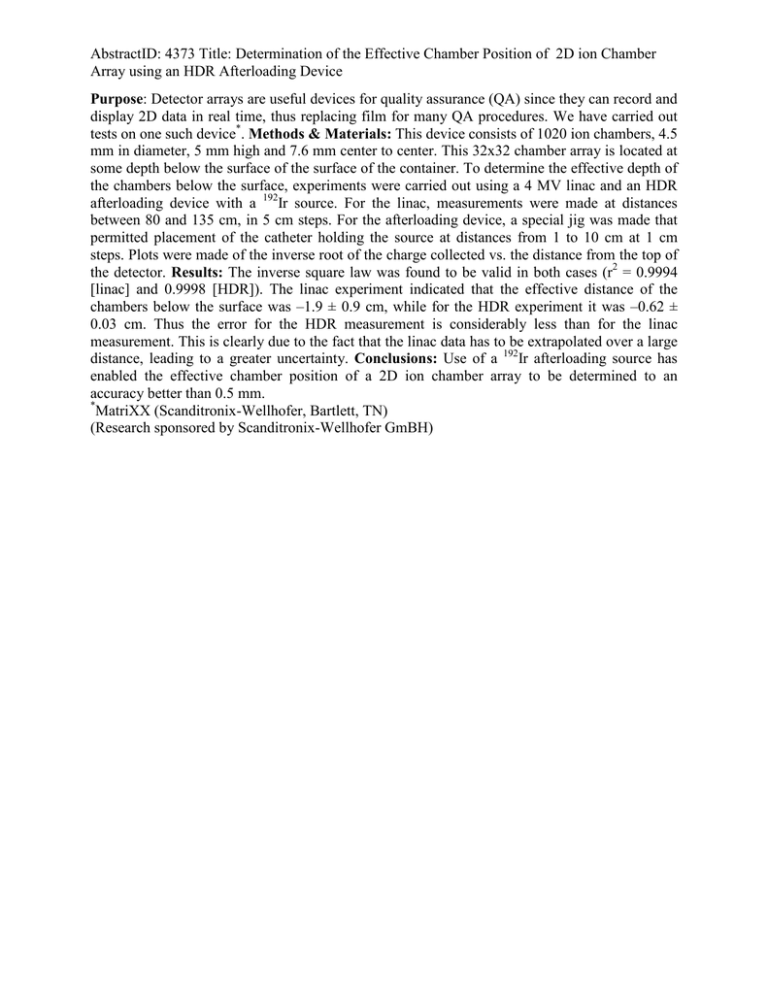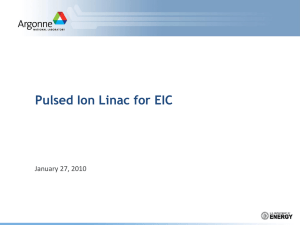AbstractID: 4373 Title: Determination of the Effective Chamber Position of ... Array using an HDR Afterloading Device
advertisement

AbstractID: 4373 Title: Determination of the Effective Chamber Position of 2D ion Chamber Array using an HDR Afterloading Device Purpose: Detector arrays are useful devices for quality assurance (QA) since they can record and display 2D data in real time, thus replacing film for many QA procedures. We have carried out tests on one such device*. Methods & Materials: This device consists of 1020 ion chambers, 4.5 mm in diameter, 5 mm high and 7.6 mm center to center. This 32x32 chamber array is located at some depth below the surface of the surface of the container. To determine the effective depth of the chambers below the surface, experiments were carried out using a 4 MV linac and an HDR afterloading device with a 192Ir source. For the linac, measurements were made at distances between 80 and 135 cm, in 5 cm steps. For the afterloading device, a special jig was made that permitted placement of the catheter holding the source at distances from 1 to 10 cm at 1 cm steps. Plots were made of the inverse root of the charge collected vs. the distance from the top of the detector. Results: The inverse square law was found to be valid in both cases (r2 = 0.9994 [linac] and 0.9998 [HDR]). The linac experiment indicated that the effective distance of the chambers below the surface was –1.9 ± 0.9 cm, while for the HDR experiment it was –0.62 ± 0.03 cm. Thus the error for the HDR measurement is considerably less than for the linac measurement. This is clearly due to the fact that the linac data has to be extrapolated over a large distance, leading to a greater uncertainty. Conclusions: Use of a 192Ir afterloading source has enabled the effective chamber position of a 2D ion chamber array to be determined to an accuracy better than 0.5 mm. * MatriXX (Scanditronix-Wellhofer, Bartlett, TN) (Research sponsored by Scanditronix-Wellhofer GmBH)



